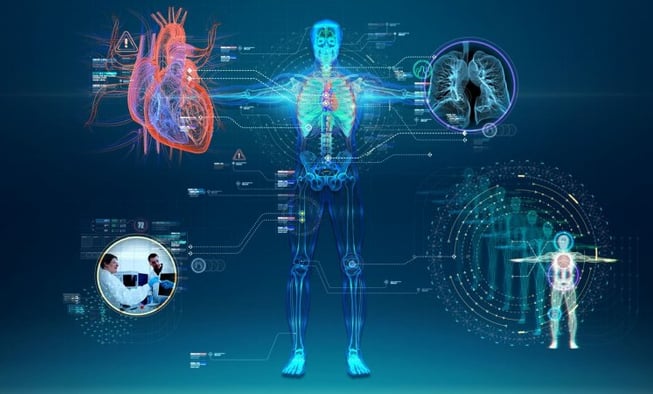ScanPoint: Exploring X-Ray Advancements
X-ray technology has been a cornerstone in medical diagnostics, industrial applications, and security screening for decades. Over the years, advancements in X-ray imaging have transformed these fields, improving accuracy, safety, and efficiency. "ScanPoint: Exploring X-Ray Advancements" dives into the latest innovations shaping the future of X-ray technology, from AI integration to low-dose imaging and beyond.
2/15/20252 min read


The Evolution of X-Ray Technology
Since Wilhelm Roentgen's discovery of X-rays in 1895, the field has undergone significant evolution. Traditional film-based radiography has given way to digital solutions, enabling faster image acquisition, enhanced contrast, and improved storage capabilities. Key milestones in X-ray advancements include:
Computed Radiography (CR): The transition from film to digital imaging.
Digital Radiography (DR): Higher resolution and real-time image processing.
Fluoroscopy: Live X-ray imaging used in interventional procedures.
3D Imaging and Tomosynthesis: Enhanced depth perception and diagnostic precision.
Innovations Transforming X-Ray Technology
Recent breakthroughs in X-ray technology have led to more effective and safer imaging methods. Here are some of the most promising advancements:
1. AI-Driven X-Ray Interpretation
Artificial Intelligence (AI) is revolutionizing X-ray diagnostics by improving detection accuracy and reducing human error. AI-powered algorithms can:
Identify fractures, tumors, and infections with high precision.
Assist radiologists in analyzing large datasets quickly.
Improve workflow efficiency in hospitals and diagnostic centers.
2. Low-Dose Radiation Imaging
Reducing radiation exposure while maintaining image quality is a top priority. New technologies focus on:
Iterative Reconstruction Techniques: Enhancing image clarity with minimal radiation.
Photon-Counting Detectors: Capturing detailed images at lower doses.
Automated Exposure Control: Adjusting radiation levels based on patient size and anatomy.
3. Portable and Handheld X-Ray Devices
Miniaturization of X-ray systems has led to the development of portable devices that offer:
On-the-go diagnostics in remote areas.
Faster patient turnaround times in emergency settings.
Reduced need for patient movement in critical care units.
4. AI-Powered Workflow Automation
Beyond diagnosis, AI is optimizing radiology workflows by:
Automating report generation.
Reducing redundancy in image analysis.
Enhancing quality control for consistent image processing.
5. Hybrid Imaging and Multi-Modality Integration
The future of X-ray lies in combining it with other imaging technologies, such as:
X-ray & MRI Fusion: Providing comprehensive soft-tissue and bone imaging.
X-ray & Ultrasound Integration: Enhancing real-time diagnostics for musculoskeletal assessments.
Dual-Energy X-Ray Imaging: Differentiating between tissue types for advanced diagnostics.
Safety and Regulatory Considerations
As X-ray technology evolves, ensuring safety and regulatory compliance remains essential. Industry standards set by organizations such as the AERB (Atomic Energy Regulatory Board), FDA (Food and Drug Administration), and IAEA (International Atomic Energy Agency) guide the implementation of safe X-ray practices. Best practices include:
Routine Quality Assurance Checks: Ensuring equipment efficiency and safety.
Radiation Protection Measures: Using shielding techniques like lead aprons and collimators.
Training and Certification: Educating professionals on the latest safety protocols.
Future Trends in X-Ray Technology
The coming years will witness even more groundbreaking advancements in X-ray science, such as:
4D X-Ray Imaging: Real-time motion tracking for dynamic studies.
X-Ray Holography: Enabling high-resolution, 3D imaging without multiple exposures.
Nanotechnology in X-Ray Sensors: Increasing sensitivity for ultra-clear images.
X-Ray in Space Exploration: Studying cosmic materials and planetary compositions.




Reference Website Link:
Recent Advances in X-ray Technology
Advances in Digital Radiography
Redefining Radiology: A Review of Artificial Intelligence Integration
Recent Development in X-Ray Imaging Technology
Innovative
Contact Us
Service
xraybazar.com
© 2024. All rights reserved.
Address- Rajasthan, India
Gmail Id- xraybazaroffcial.com
Important Links
